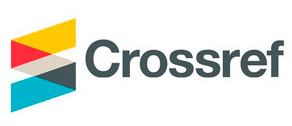Challenges of temperature measurement during the friction stir welding process
Keywords:
friction stir welding, direct temperature measurement, Seebeck-effect, measurement errorsAbstract
The exact determination of the process zone temperature can be considered as an increasingly important role in the control and monitoring of the friction stir welding process (FSW). At present, temperature measurement is carried out with the aid of a temperature sensor integrated into the tool (usually thermocouples). Since these cannot be attached directly to the joining area, heat dissipation within the tool and to the environment cause measurement deviations as well as a time delay in the temperature measurement. The article describes a process and the challenges that arise in this process, how a direct temperature measurement during the process can be achieved by exploiting the thermoelectric effect between tool and workpiece, without changing the tool by introducing additional temperature sensors. Bibl. 12, Fig. 7.
Точне визначення температури технологічної зони набуває все більш важливу роль в процесі контролю і моніторингу ротаційного зварювання тертям. В даний час вимірювання температури здійснюється за допомогою вбудованого в інструмент давача температури (зазвичай термопари). Оскільки її не можна прикріпити безпосередньо до області з'єднання, розсіювання тепла всередині інструменту і в навколишнє середовище викликає відхилення в вимірах, а також затримку вимірювання температури в часі. У статті описано процес і пов'язані з ним проблеми. Показано, що пряме вимірювання температури в ході процесу може бути здійснене за рахунок використання термоелектричного ефекту між інструментом і деталлю без заміни інструменту шляхом введення додаткових давачів температури. Бібл. 12, рис. 7.
References
D. Schmid: Reibrührschweißen von Aluminiumlegierungen mit Stählen für die Automobilindustrie, Dissertation, TU Mün- chen, Herbert Utz Verlag GmbH, 2015.
A. Fehrenbacher, C. Smith, N. Duffie, N. Ferrier, F. Pferfferkorn, M. Zinn: Combined Temperature and Force Control for Robotic Friction Stir Welding, ASME, J. Manuf. Sci. Eng 136 (2), 021007 (Jan 15, 2014 року), Paper No: MANU-12-1357; DOI: 10.1115 / 1.4025912.
ACF Silva, J. De Backer, G. Bolmsjö: Temperature measurements during friction stir welding, University West, Trollhät- tan, Sweden, Springerlink.com, 2016. DOI 10.1007 / s00170-016-9007-4.
E. Cole, A. Fehrenbacher, N. Duffie, M. Zinn, F. Pfefferkorn, N. Ferrier: Weld temperature effects during friction stir weld- ing of dissimilar aluminum alloys 6061-t6 and 7075-t6, Int J Adv Manuf Technol (2014 року) 71: 643-652. DOI 10.1007 / s00170-013-5485-9.
A. Fehrenbacher, N. Duffie, N. Ferrier, F. Pfefferkorn, M. Zinn: Effects of tool-workpiece interface temperature on weld quality and quality improvements through temperature control in friction stir welding, The Int. Journ. Adv. Manuf. Techn., Vol. 71, pp. 165-179, 2014/03/01, 2014.
F. Bernhard (Hrsg.): Handbuch der Technischen Temperaturmessung, 2. Auflage, Springer-Verlag, 2014.
M. Javurek, A. Mittermair: Wo in einem Thermoelement herrscht die gemessene Temperatur? Analyse mittels FE- Simulation, Technisches Messen, Heft 11, 2016, De Gruyter Oldenbourg.
DOI 10.1515 / teme-2016-0028.
P. Germanow: Messtechnische Untersuchung der Kennlinienstabilität von Thermoelementen, TU Ilmenau, Masterarbeit, 2019.
ES Webster: Low-Temperature Drift in MIMS Base-MetalThermocouples, Springer Verlag, Int J Thermophys (2014 року) 35: 574-95. DOI 10.1007 / s10765-014-1581-9.
AD Greenen, ES Webster: Thermal Recovery from Cold-Working in Type K Bare-Wire Thermocouples, Springer Ver- lag, Int J Thermophys (2017) 38: 179. DOI 10.1007 / s10765-017-2316-5.
M. Baranowski, K. Schmidt, MK Stobrawa: Anwendung des Seebeck-Effekts zur Messung der Prozesszonentemperatur beim Reibrührschweißen, Dokumentation Projektseminar, TU Ilmenau, 2018.
MZH Khandkar, JA Khan, AP Reynolds: Prediction of temperature distribution and thermal history during friction stir welding: input torque based model, Sc. and Techn. of Welding & Joining, 8 (3): 165-174, 2003. DOI: 10.1179 / 136217103225010943




